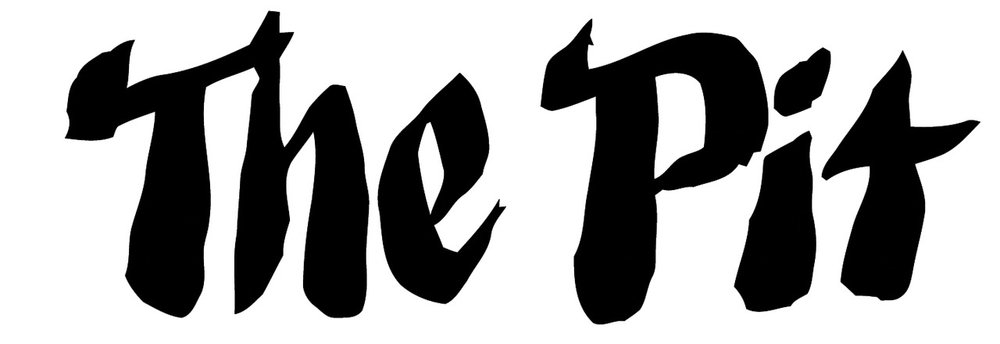Daily Serving Reviews Flavr Savr*
The New York Times highlights The Pit Booth at NADA 2016
Artsy reviews Spirit Baby at The Pit II
White Hot Magazine Reviews Reveal the Rats
Artsy reviews Reveal the Rats
Artsy Interviews The Pit
Artsy interviews The Pit
An Erik Frydenborg Omnibus reviewed by David Pagel of LA Times
Edible Planets/Soylent Dialogues reviewed by David Pagel of the LA Times
Surface of Color reviewed by Abe Ahn on Hyperallergic
http://hyperallergic.com/243093/forging-queer-identity-with-abstraction/
LOS ANGELES — Queerness is often expressed through figuration or performance, but Surface of Color, curated by artist Paul Pescador, challenges the notion that identity must be explicit by presenting works that elude easy definition. Applying Eve Kosofky Sedgwick’s call to “pluralize and specify,” the group show presents abstraction as a way of illustrating different modes of queerness. The works in the show are not interested in universalizing gender or sexuality under a single banner but rather in giving accounts of the multiple ways in which queerness can be embodied.
Eduardo Consuegra’s “Untitled Collate” (2015) is a collage of magazine ad cut-outs and photo gels. The cut-outs, set against blank gray matte boards, advertise an old Sony tape deck with an image of Marilyn Monroe. Next to the collage is a monochrome silk screen painting with uneven brushstrokes of gray. The use of the Sony ad suggests the artist’s disidentification with 1970s consumer culture, with Marilyn standing in for camp and middle class aspiration.
Lecia Dole-Recio is interested in the hybridity of shapes and forms. Part painting and part collage, “Untitled (wht.ppr.trngls.bl.dmnds.)” and “Untitled (fl.ppr.blk.pnt.wht.crdbrd.trngls.)” arrange geometric shapes in ways that resist categories. The pieces contain no markers of identity other than the artist’s will to create work that is neither this or that, either here or there. Their only essential quality is their open-endedness.
The title of E.J. Hill’s “tfw u tryna move on but he keep liking your posts on IG” (2015) suggests a color field of warm and cool emotions aroused by an ex-partner, while the fishnet stocking–wearing rainbow in Pearl C. Hsiung’s “Eye of the Beholder” (2007) plays with anatomy by spreading its legs and revealing either a starry clitoris or anus or both.
The absence or presence of the body recurs throughout the show. Amir Nikravan’s “Rep/Set 7” (2015) represents a messy abstraction of footprints, leaving impressions of a body or bodies that are otherwise invisible, like the two lovers in Felix Gonzalez-Torres’ “Untitled (billboard of an empty bed)” (1991). Slithering from the gallery’s eponymous pit is Anna Sew Hoy’s “Denim Worm” (2008), patches of denim resembling a placental cord or set of entrails. It brings into visceral form the familiarity and strangeness of the body during pregnancy, transforming used clothing (familiar through wear) into an alien encounter with its afterbirth.
In other works, the way things look is set against how they feel. The materials in Lee Maida’s “Snail” (2013–15), an assemblage of fabric and ceramic, invite touch, but the aggressive rips and tears negate that impulse. The title of Amanda McGough’s “It Feels Like a Grapefruit” (2015) invites curiosity about the texture of the cardboard shelf, but its sturdy appearance belies its function as a delicate art object. These works seem to capture some sense of how queerness is experienced through a body whose appearance may suffer the scrutiny or curiosity of others.
Veiled meanings and indeterminacy have characterized abstraction throughout history. Brenna Youngblood’s “Two Can Win” (2013) and Mark McKnight’s “Window #3” (2015) use painting and photography, respectively, to encode and uncover the surface of things. The former embeds objects into the color field, the vague appearance of a chainlink fence outlining a sense of place or displacement, while the latter captures how marks and gestures can break through the artifice and reveal the layers beneath.
The central premise of Surface of Coloris that none of the works in this show deal with identity by making explicit claims toward race or gender. While many of them place themselves in conversation with modernist forms, the show demands that we consider alternate readings of abstraction to avoid claims of universalism or dominant narratives of art history. This may help us to understand how queerness is not limited to just identity, but also ways of seeing, creating, and inhabiting our bodies.
Surface of Color continues at The Pit (918 Ruberta Ave, Glendale, CA 91201) through November 15.





































